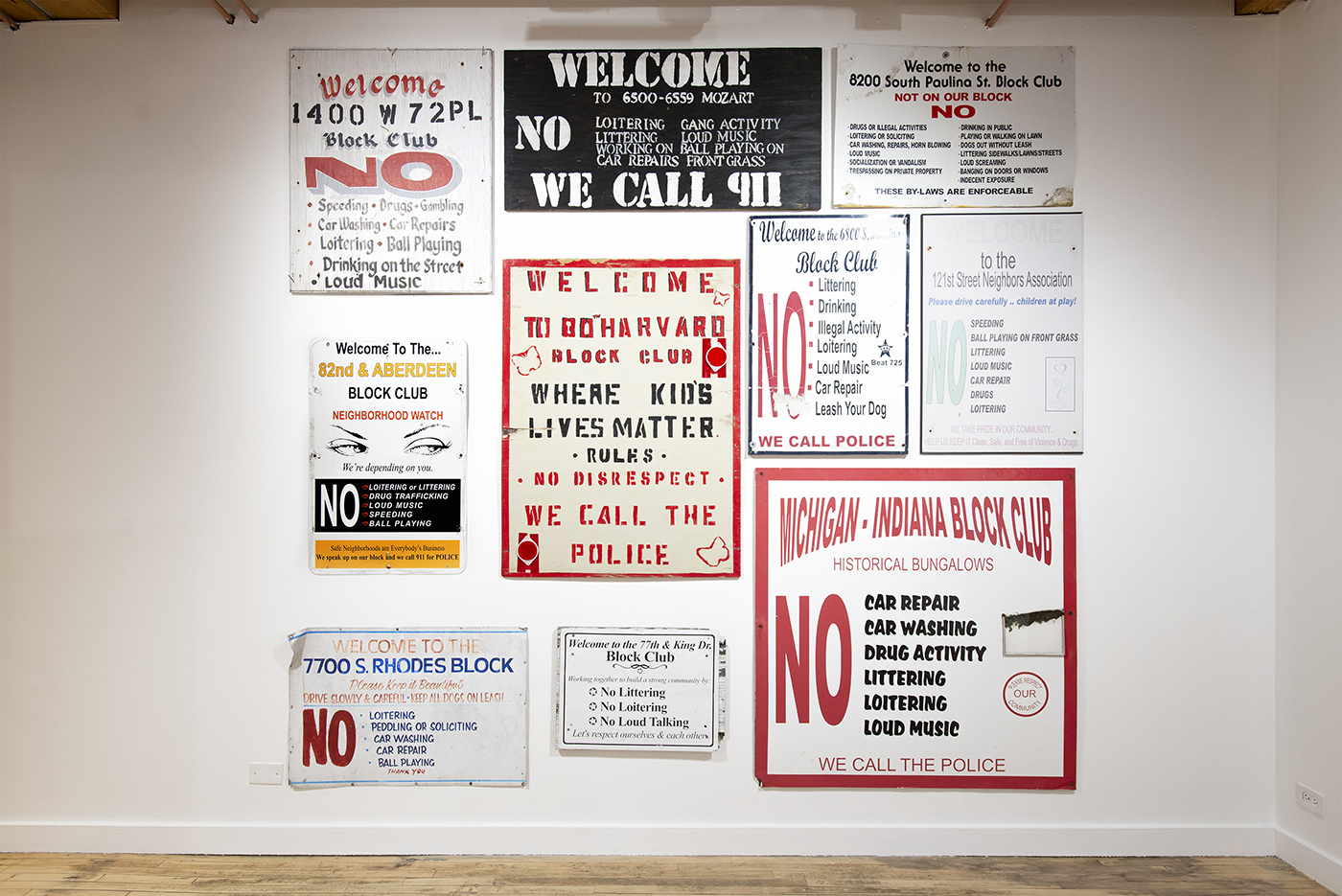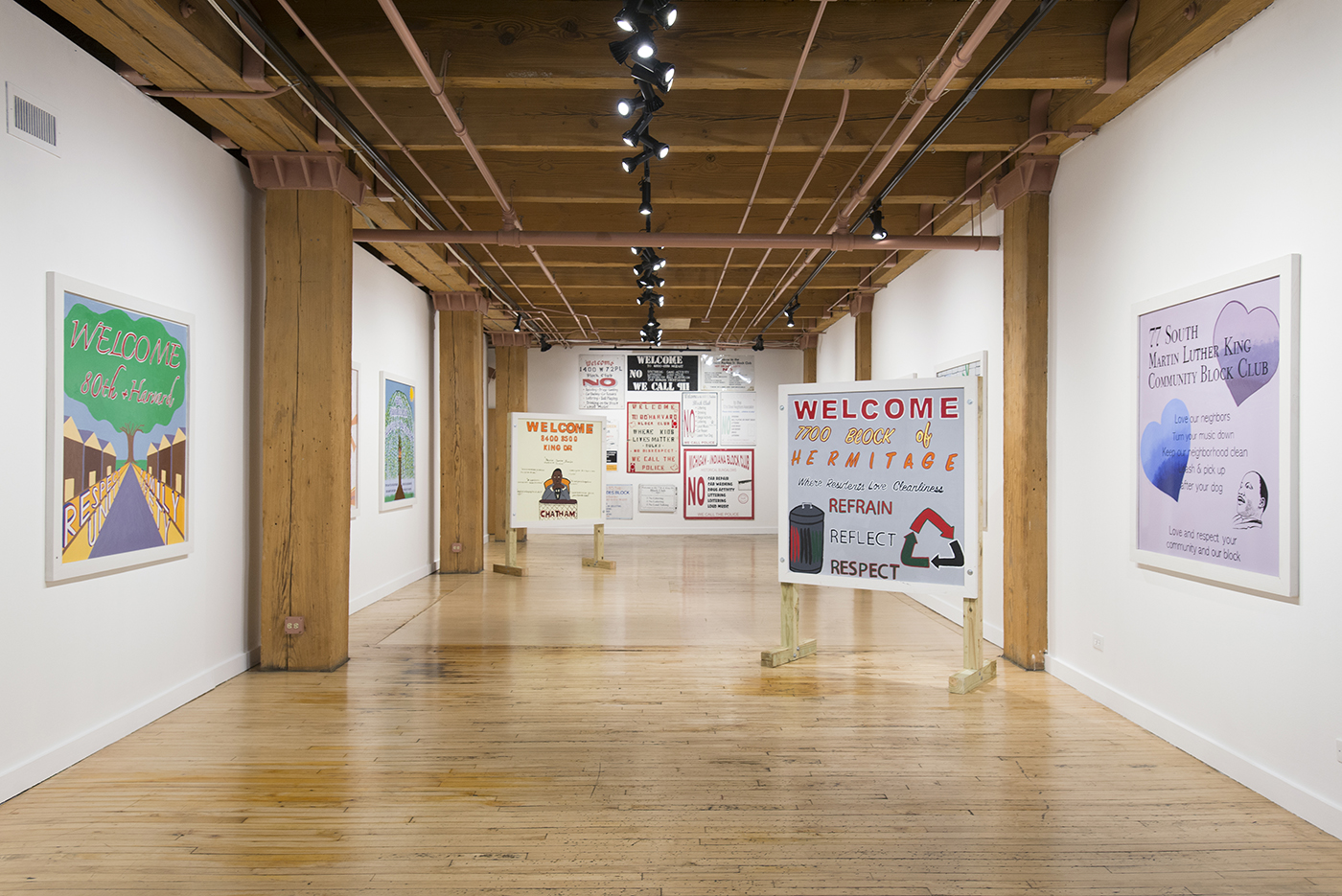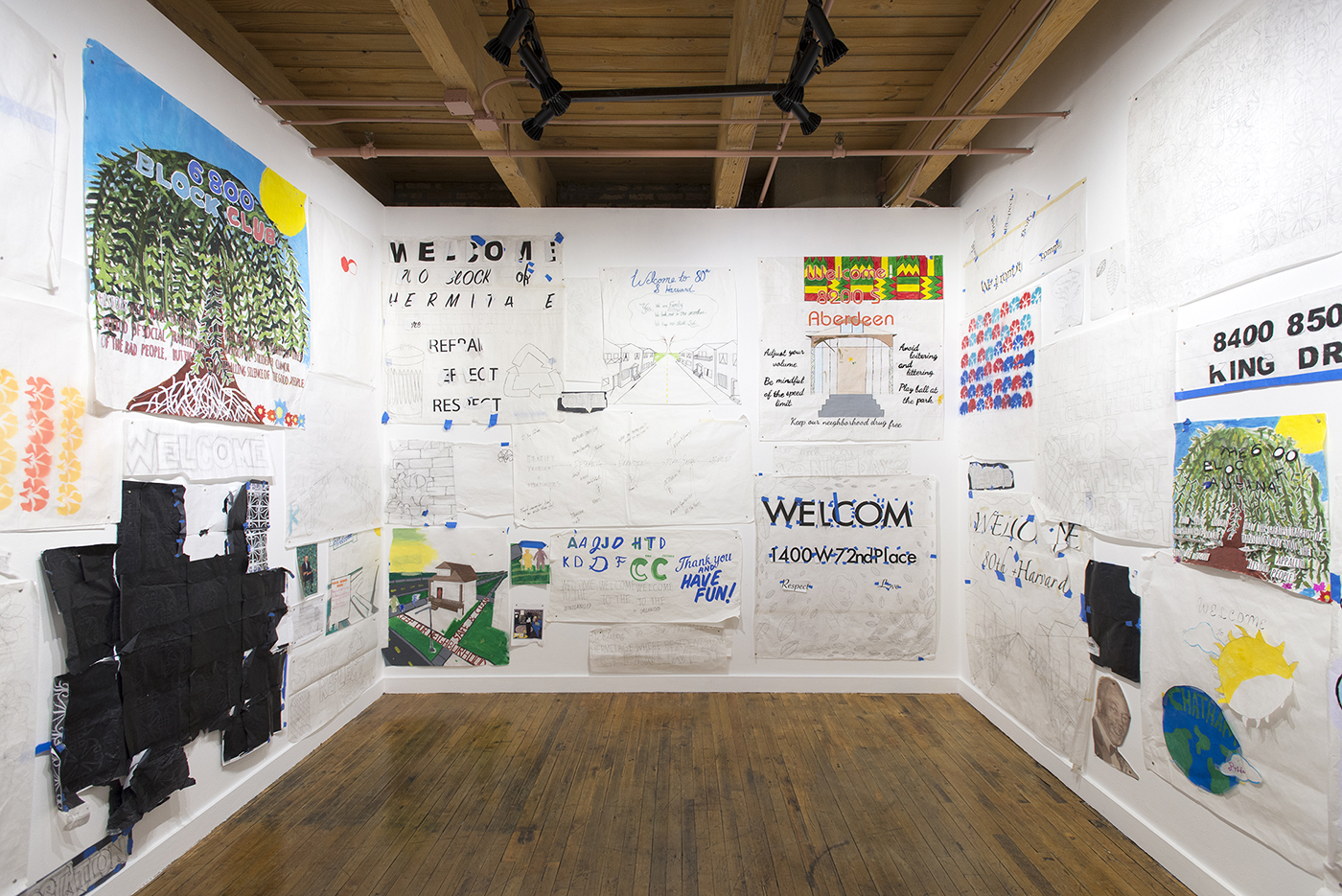When activist Jahmal Cole moved to Chatham in 2007 with his wife, Tiffany, he noticed that their new neighborhood was dotted with block club signs. Although their messages intended to keep the area safe, they bothered him every time he went on a jog. Each was dingy and dented and belted a refrain of no’s: “No loud music.” “No car washing.” “No loitering.” “No drugs.” They made him feel shut down, so he wanted to change them.
“I needed something that said, 'Yes,'" he insisted during a recent conversation on the history of Chicago’s block clubs, organized by the Chicago Humanities Festival.
Now, over 10 years later, Weinberg/Newton Gallery presents Block Building, an exhibition that showcases 12 block club signs from the South Side and 12 new, more welcoming ones that will replace them after the show’s run. In a back room, a projector loops silent home movies from 1960s block club parties that show scenes like kids jumping double dutch and women with beehives laughing. Together, these objects, new and found, present South Side neighborhoods on their own terms — as vibrant and alive.
Looking at the old signs, it’s easy to see what Cole was reacting to. “No” is the biggest word on every one, spelled out in bold colors and stark block lettering. The new signs enliven the gallery’s white walls with electric colors, geometric shapes, and uplifting messages such as, “Respect and Love” and “Let us share the benefits we’ve gained for ourselves with others.” Most striking is how the phrases and bright, eye-catching images combine to exude a sense of warmth. They act as invitations into the gallery space, in the same way that they'll eventually welcome visitors to their respective neighborhoods.

Like many Chicago residents, Cole had grown up with a vague awareness of block clubs. But until moving to Chatham, he wasn’t entirely sure what they were or how to get involved. Block clubs are volunteer-run groups for addressing block- or neighborhood-specific concerns. Anyone can join, but members are usually local property owners, such as landlords, homeowners, or small businesses. While they exist throughout the city, they’re historically rooted in black neighborhoods.
The first block club was founded in 1908 by a group of black women led by Lugenia Burns Hope. They organized five black neighborhoods in Atlanta, Georgia into the Neighborhood Union to address problems the city had ignored. By the mid-1920s, the National Urban League, founded to promote black middle-class values, took note of this strategy and how it had spread to a few other cities. Its members wrote articles in newspapers that spotlighted what they described as “block clubs” and called for more to be established. This led to block clubs in cities such as St. Louis, Baltimore, Pittsburgh, and Chicago.
It’s unclear when signs became a hallmark of these neighborhood groups, but Amanda Seligman, historian and author of Chicago’s Block Clubs; How Neighbors Shape the City, speculates that signs’ negative messages also have roots in the Urban League. During the Great Migration of the early 20th century, the Urban League was invested in regulating the behavior of black southerners who moved north.
“[They were] nervous about how [black] people from the south would be perceived by people in the north,” she says, “by white people who were racist and also by African Americans who were more established in Chicago and skeptical about being associated with people who seemed ‘backwards’ and unfamiliar with urban ways.”

The Urban League handed out cards and took out ads in papers such as the Chicago Defender that told southern transplants what not to do. They thought of this harsh self-policing as “racial uplift,” Seligman says. This self-policing continued when block clubs began disseminating newsletters with strict neighborhood codes of conduct, which continued through the latter half of the 20th century. When block clubs began making signs, Seligman suggests, they continued the tradition of “very clear and negative directions” on how residents should behave.
In 1993, the Chicago Police Department created the Chicago Alternative Policing Strategy, or “CAPS,” which focuses on hyper-local policing strategies in high-crime areas. By 1996, establishing more block clubs became a priority for CAPS. Many of the signs that caught Cole’s attention on his runs were made and installed during this time. Initially, Cole was unaware of this complicated history. He just wanted to help set a new tone for a neighborhood he was excited to live in.
To do this, Cole began researching and contacting his local block clubs. He also reached out to artist Theaster Gates, who connected him with Arts + Public Life’s Design Apprenticeship Program. Run through the University of Chicago, the arts incubator teaches teens and young adults how to improve their communities through design. Mentees, many of whom are from the neighborhoods getting new signs, worked with block club members to determine how these signs should look.

In 2017, the group redesigned seven block club signs; this year, they changed 12 more. These 12 new signs and their predecessors are on view in Block Building.
At a time when the role of police is being questioned — especially in Chicago’s black communities — many youths in the Design Apprenticeship Program wrestled with reconciling the legacy of police and their influence on block clubs as they worked on the signs.
“The teens had to ask themselves, as designers, ‘How do I present these ideas and this direct language in a way that is contradictory to what I believe?’” says Gabriel Morena, the project manager.
Making the signs became a visual exercise in holding space for competing desires. Many of the old signs emphasize that residents don't shy away from calling the police on miscreants. In the new signs, only one retains this warning. It's written in beautiful red script, among more positive phrases such as “We respect cleanliness" that circle a large, blue flower. The largest message of all? “Welcome.”
Addressing multiple concerns, the signs are a lot like the neighborhoods they represent. Being neighbors isn’t about being friends so much as co-existing in a productive, positive way. The new block club signs bring together different needs in a way that enriches the landscapes of their communities while painting a vision for each of their futures — one that’s self-determined.
When the signs are installed in their permanent homes on the South Side, they’ll be encouraging reminders to residents that they share a space worth being proud of. In a gallery in the Loop, the signs remind residents of Chicago’s other communities that the South Side is their neighbor, too. It has rules and it commands respect, but it’s also as beautiful and full of life as these signs. Most of all, anyone is welcome.
Block Building runs through December 8.


